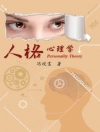The Connection Code: Flourish Together Through Strategies for Unlocking Joy
Imagine standing on the sidelines while your child struggles to engage with others at a playdate. You can feel their frustration as they wish for the companionship that seems just out of reach. Your heart aches knowing they want to connect, yet the social barriers appear daunting. In this pivotal moment, you realize that understanding their unique needs is not just important-it’s essential for fostering their social confidence.
This journey doesn’t have to be taken alone.
You’re equipped to help your child embrace social situations with greater ease and joy. With the right strategies, you can create an environment where they feel safe to learn and practice essential social skills. Inside The Power of Connection: Unlocking Potential in Autism, you will:
- Discover effective techniques to nurture emotional well-being and confidence in children.
- Learn practical, engaging activities tailored to enhance social skills and communication.
- Foster a deeper understanding of autism and its impact on social interactions.
Unleash the power of connection today and watch your child or students flourish in social settings.
قائمة المحتويات
Table of Contents
Introduction
Chapter 1: Understanding Autism and Social Differences
The Eye Contact Challenge
Emotion Charades: Understanding and Communicating Feelings in a
Playful Context
Case Study: Social Confidence
Mindful Transitions: Adding Empathy Games Into Daily Life
Bridging, Unlocking, and Harmonizing: Connecting the Dots
Chapter 2: Navigating Sensory Sensitivities
Sensory Exploration Station: Texture, Sound, and Light
Types of Sensory Input
Crafting a Calm Space: Calm-Down Corner for Self-Soothing
Case Study: Activity Time with Robin
Bridging, Unlocking, and Harmonizing: Connecting the Dots
Chapter 3: Facilitating Communication in Children With Autism. 21
I Say, You Say, We Say: Role-Play to Converse
Making Personalized Visual Schedules
Using Visuals for Turn-Taking and Interaction
Integrating Storytelling With Personal Experience
Case Study: Sibling Story Time
Bridging, Unlocking, and Harmonizing: Connecting the Dots
Chapter 4: Fostering Flexibility in Interactions
Chameleon Challenge: Adjusting to New Rules and Situations
Case Study: Cora’s Conversation Compass for Getting Ready for
Different Social Situations
Role-Playing Exercises: Applying Social Skills in Safe Environments
Debriefing and Reinforcing: Skills and Growth
Bridging, Unlocking, and Harmonizing: Connecting the Dots
Chapter 5: Building Peer Relationships
Getting Kids Invested in Sharing
Cooperative Building Challenge
Reflection and Feedback
Creating a Positive Social Environment
Bridging, Unlocking, and Harmonizing: Connecting the Dots
Chapter 6: Managing Emotions Effectively
Emotion Thermometer: Creating Scales for Emotional Awareness
Reflection Exercises: Understanding Emotions Through Activities
Setting Routines: Normalizing Emotional Management Practices
Bridging, Unlocking, and Harmonizing: Connecting the Dots
Chapter 7: Developing Social Confidence
Compliment Circle: Practicing Positive Feedback
Social Situation Problem-Solving: Role-Playing Real-Life Challenges
Building Communication Skills Through Interactive Games
Encouraging Empathy and Understanding in Social Interactions
Bridging, Unlocking, and Harmonizing: Connecting the Dots
Chapter 8: Starting Back at One (You): Creating an Empowering
and Supportive Environment
Understanding Empathy: Building Deeper Connections Through Perspectives
Active Listening as a Tool for Empathy
Effective Engagement Techniques: Enhancing Interactions With
Structured Activities
Modeling Empathy Through Daily Interactions
Bridging, Unlocking, and Harmonizing: Connecting the Dots
Chapter 9: No Matter Your Role – Why It’s Important
to Collaborate
The Importance of a Unified Approach
Working With Teachers: Effective Communication and Collaboration
The Roles of Different Professionals: A Collaborative Support Station
Building a Comprehensive Support Team
Bridging, Unlocking, and Harmonizing: Connecting the Dots
Conclusion
Resources and References
عن المؤلف
About Author:Stacy Clayton is a dedicated educator with over 23 years of experience as both an administrator and former special education teacher. As the author of The Power of Connection: Unlocking Potential in Autism, she passionately advocates for children with diverse learning needs. Holding a Master’s in Education, she has worked tirelessly to bridge gaps between schools, families, and therapeutic communities. Her extensive experience uniquely positions her to provide strategies that are not only evidence-based but also deeply compassionate and practical.












